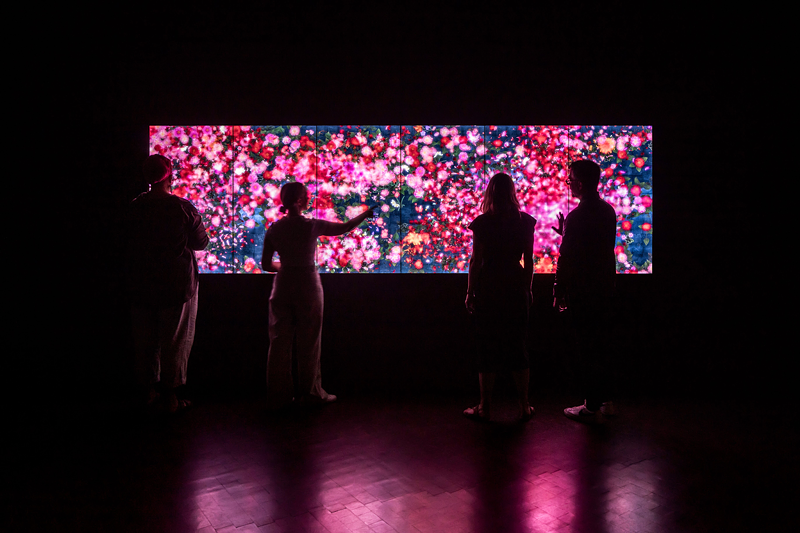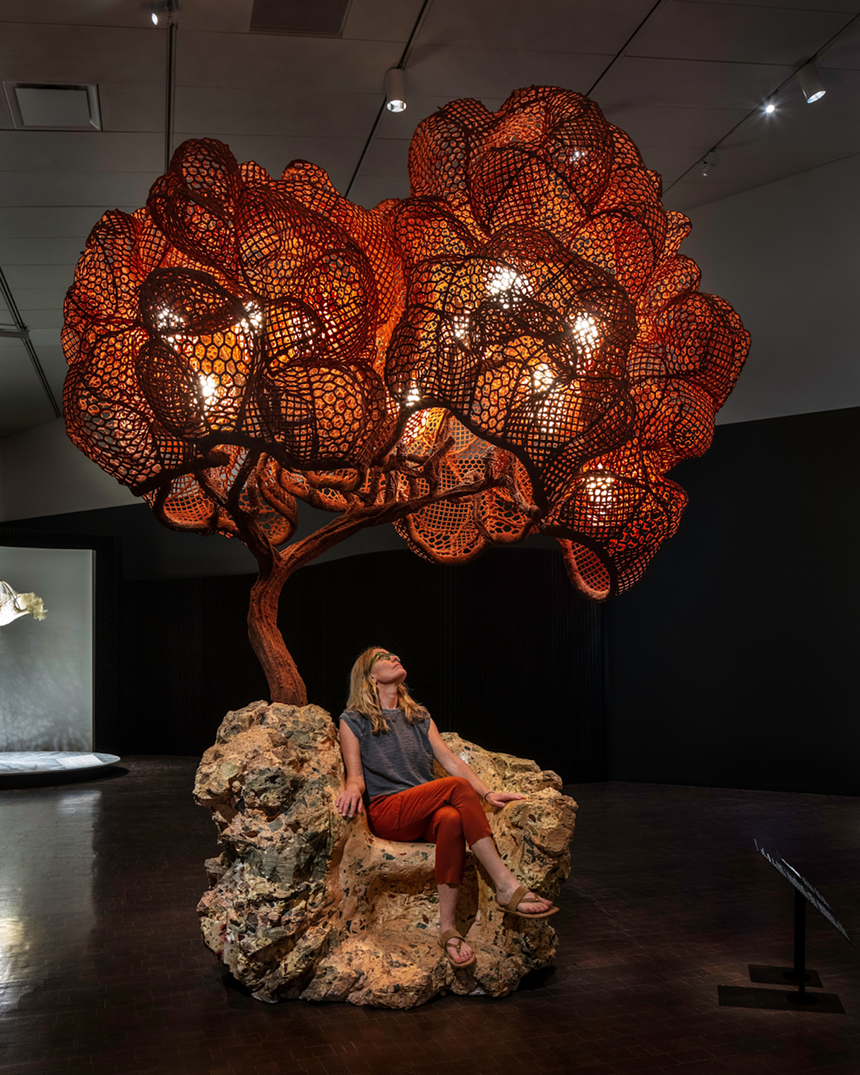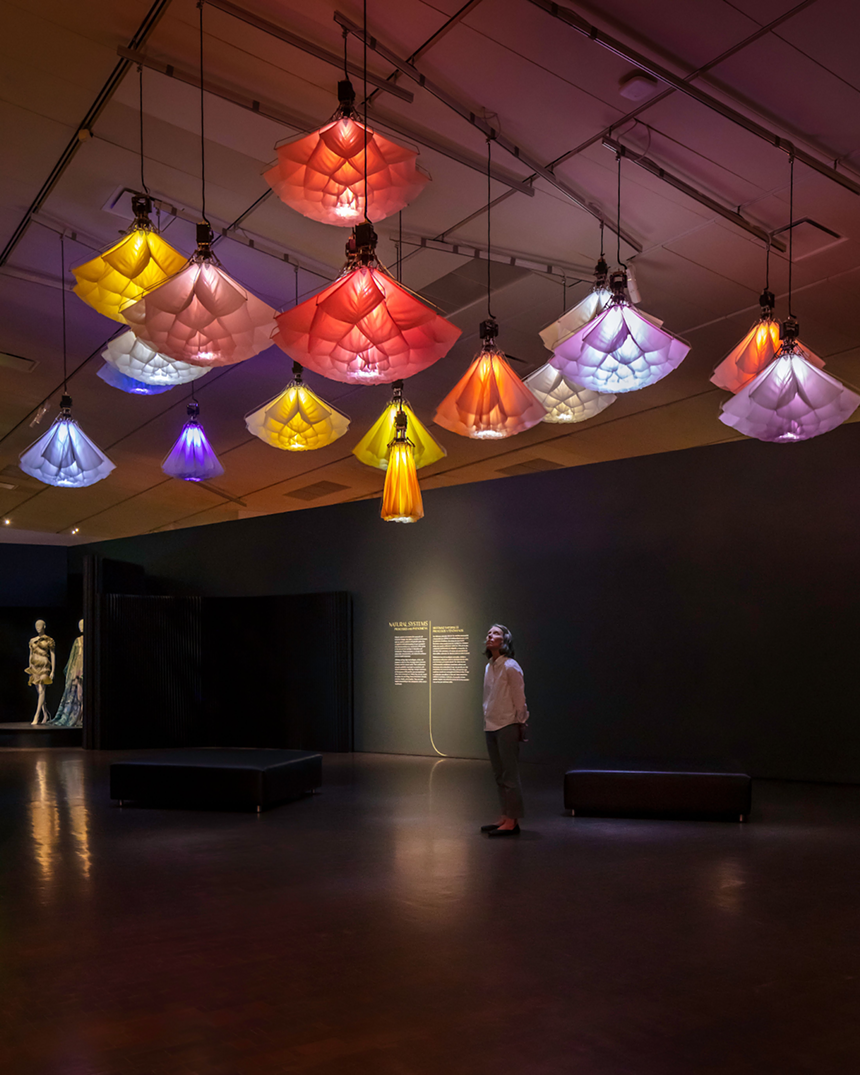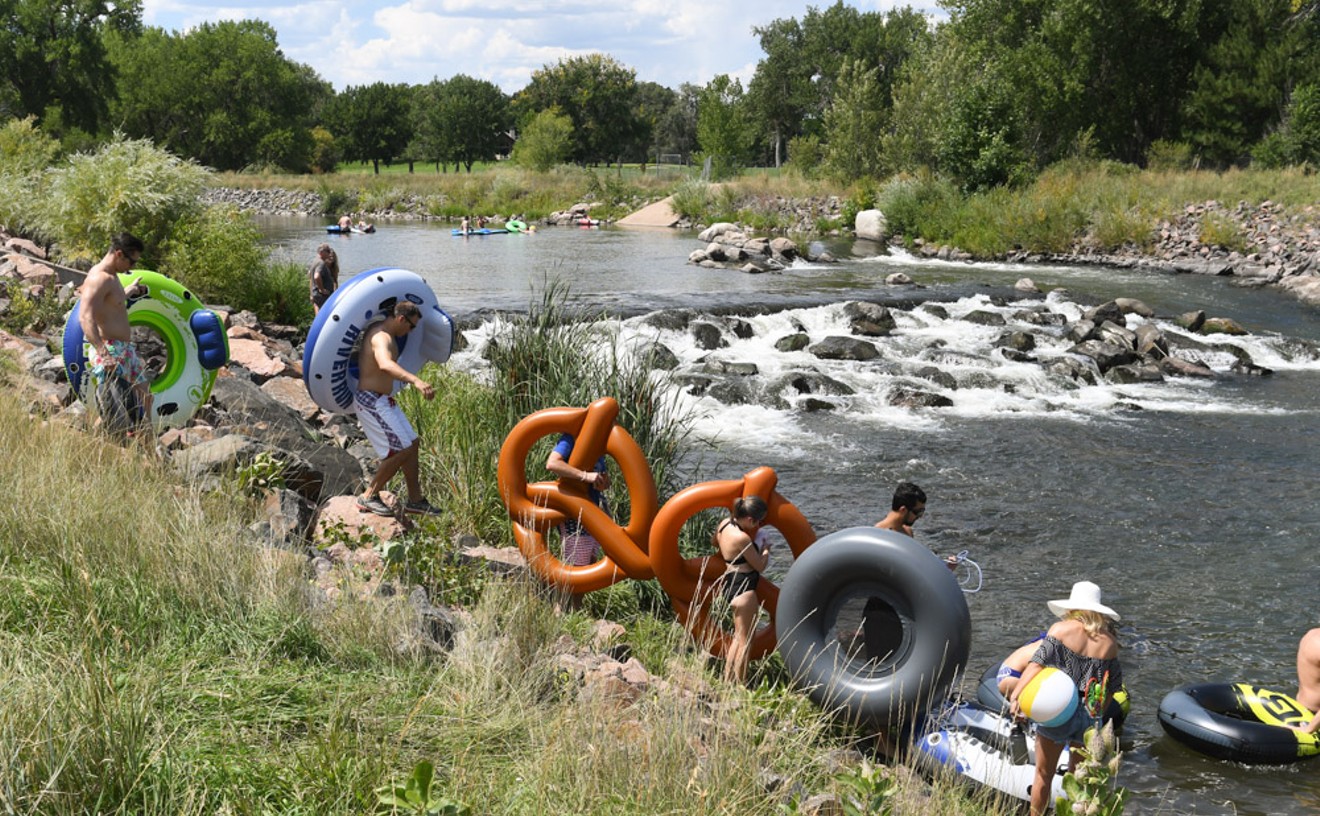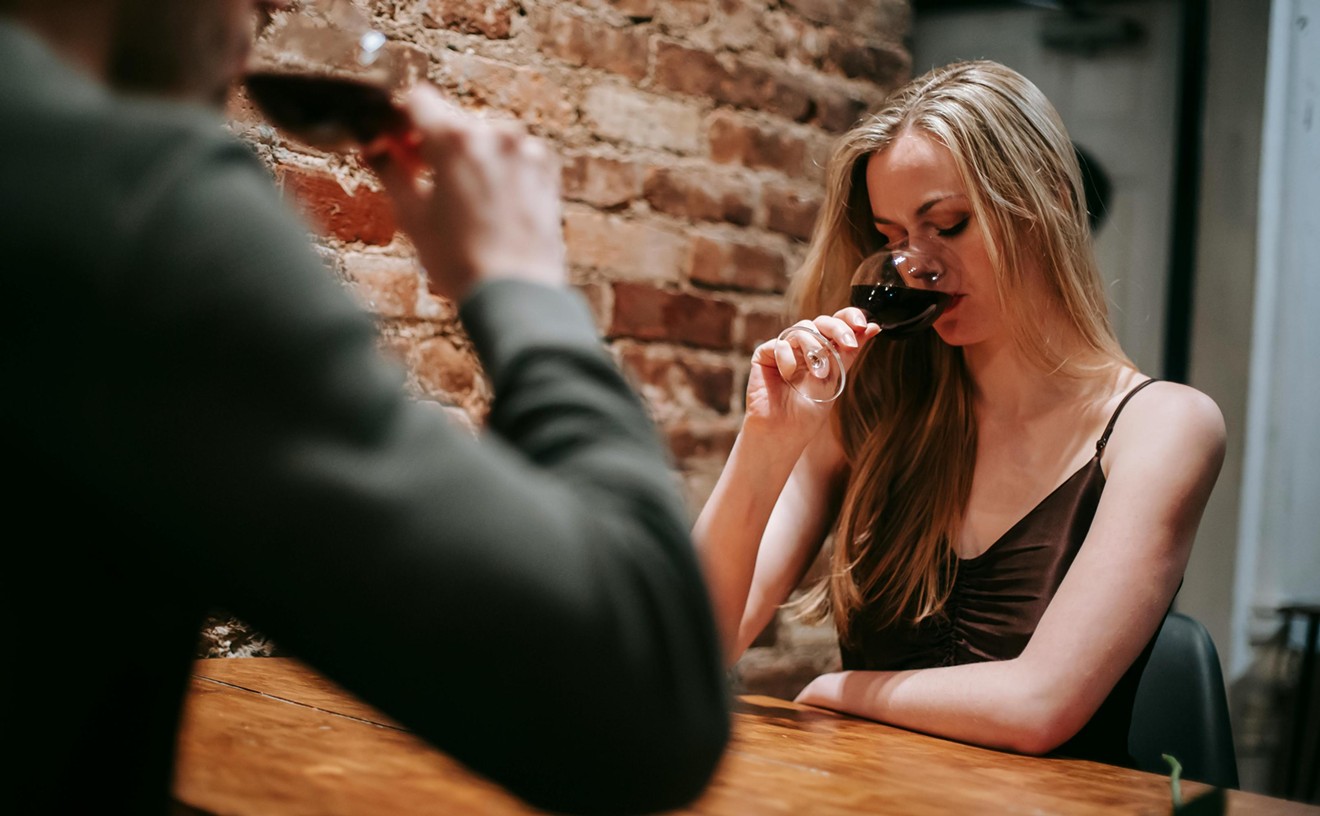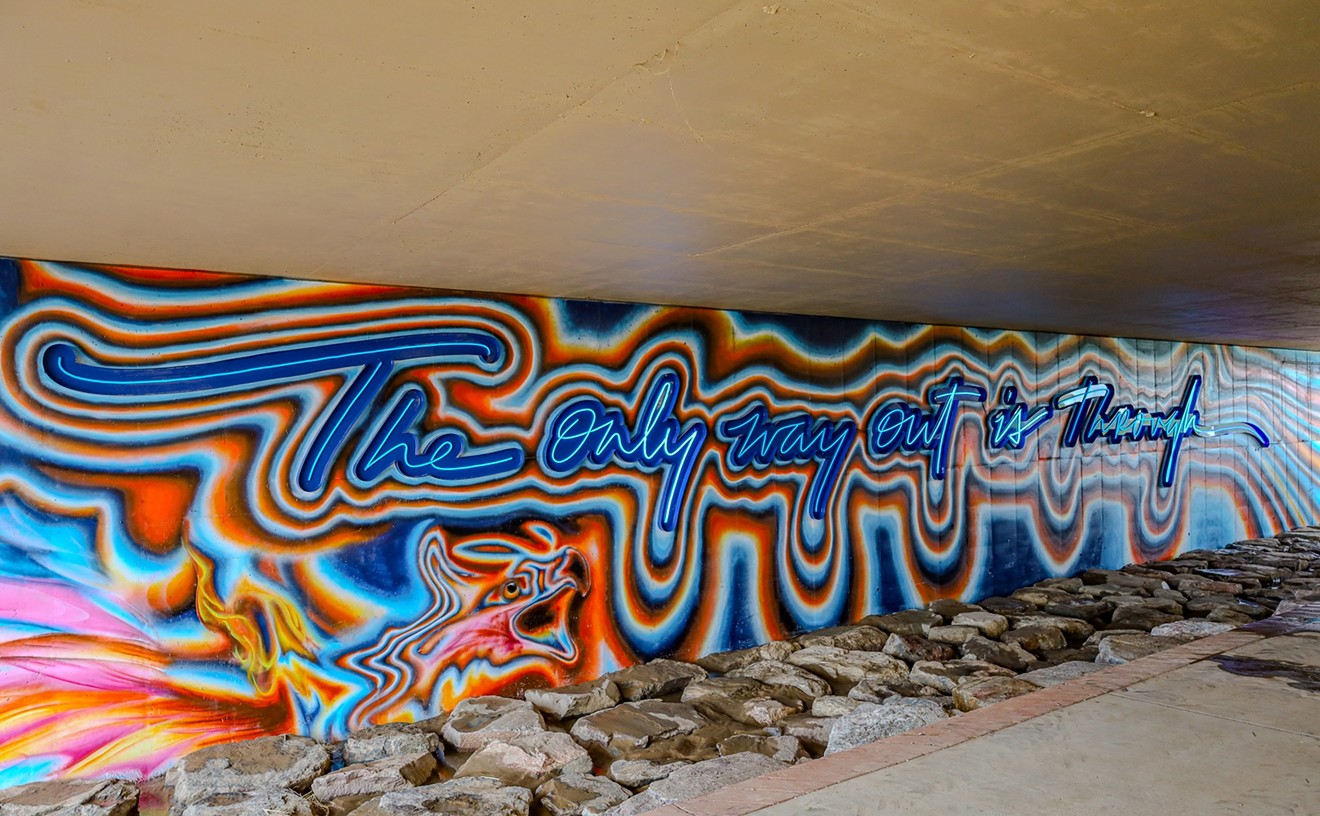If there’s any city in the United States that deserves an art exhibition that speaks to the ancient, ever-evolving relationship between humans and nature, it’s the one that sits on the eastern slope of the country’s grandest wilderness. If there’s any collection of contemporary artworks that so joyfully and impressively renders nature’s abundant wonder while respecting its inimitable power as Biophilia: Nature Reimagined, we haven’t seen it yet.
Biophilia, which is open at the Denver Art Museum through August 11, reminds you how much of the natural world you haven’t seen, either because there’s simply too much of it for a single person to bear in a lifetime, or because you, like the rest of us, are too distracted to notice it right under your nose.
Curator of Architecture and Design Darrin Alfred first pitched the concept to the museum in 2014, then ushered the show to completion over the ensuing decade and through the pandemic’s challenges. “Biophilia is all about exploring humanity’s connection with nature,” Alfred says. “Over the last few years, a lot of these questions are at the front of people’s minds. We wanted to create a show that encourages people to reflect on that relationship.”
Organized into three thematic segments — “Natural Analogs,” “Natural Systems” and “Topophilia” — the exhibit takes visitors on a journey through an elaborate ecosystem of nature-inspired art. With works evoking the patterns and rhythms of trees, flowers, rocks, roots and other overlooked organic matter, every step through the display creates an opportunity for intimacy and reflection about our relationship to the natural world. Without lecturing, Biophilia encourages visitors to consider how strained that relationship has become, whether through our digital devices or the pressures of modern industrial life. “We didn’t necessarily want the show to be a typical ‘green design’ exhibit, or to be explicitly about sustainability,” Alfred explains. “And we didn’t want it to be all doom and gloom. We wanted to lead with the emotional side of our connection with nature, and how powerful that can be.”
From one immersive encounter to another — be it with “Nana Lure Chandelier,” by PELLE, or the surprisingly comfortable “One-seater Concrete Tree,” by Nacho Carbonel — the show inspires a sense that this relationship, fraught as it may be, is not beyond repair.
“Meadow,” by the Dutch arts collective DRIFT, is an installation of mechanical flowers suspended bloom side down from the ceiling and illuminated from within. From the vantage point of the ground, viewers gaze into the giant flowers, which expand and contract as they might in different light or stages of bloom, but at an amplified scale and pace. Like several other pieces in the show, the art magnifies a natural pattern that is nearly imperceptible to us in our daily lives, unless we were to look very closely for a long, uninterrupted period of time.
Taking the works independently or the exhibition as a whole, Biophilia provokes a desire to do exactly that: to sit in the shade of a resilient tree, to stare at a flower without distraction, to feel your feet sink into sand as a tide retreats. This was the first time I can say I’ve left an art show feeling as if I had woken up in the woods: lighter, calmer, and a bit disappointed to get back in my car.
But Biophilia isn’t exactly anti-technology, or even tech-agnostic, as one might expect from a show about the love affair between humans and nature. As soon as visitors encounter “Flowers and People — A Whole Year Per Hour," a high-tech LED installation by teamLab that uses motion sensors to influence the movements of digital flowers on the screen, it’s apparent that technology will play a role in the rest of the show, and further, in the story of art and nature moving forward.
“There’s definitely an unease there that can’t be denied,” curator Alfred reflects. “But we wanted to show art that doesn’t shy away from the influence that technology has on our lives, and on the natural world.” Crucially, the more tech-driven, futuristic works in Biophilia tend to convey the notion that tech can be a tool to support and protect the natural world rather than replace or destroy it.
Above all, the abundance of wonder in the art in Biophilia: Nature Reimagined suggests that as humans inevitably continue to build, paint, design, weave and sculpt, we’d do well to keep an eye on the trees, the flowers and the mountains to our west. We’d do well to see the creativity all around us.
Biophilia: Nature Reimagined is at the Denver Art Museum, 100 West 14th Avenue Parkway, through August 11. Find tickets and membership information at denverartmuseum.org.
[
{
"name": "Air - MediumRectangle - Inline Content - Mobile Display Size",
"component": "12017618",
"insertPoint": "2",
"requiredCountToDisplay": "2"
},{
"name": "Editor Picks",
"component": "17242653",
"insertPoint": "4",
"requiredCountToDisplay": "1"
},{
"name": "Inline Links",
"component": "18838239",
"insertPoint": "8th",
"startingPoint": 8,
"requiredCountToDisplay": "7",
"maxInsertions": 25
},{
"name": "Air - MediumRectangle - Combo - Inline Content",
"component": "17261320",
"insertPoint": "8th",
"startingPoint": 8,
"requiredCountToDisplay": "7",
"maxInsertions": 25
},{
"name": "Inline Links",
"component": "18838239",
"insertPoint": "8th",
"startingPoint": 12,
"requiredCountToDisplay": "11",
"maxInsertions": 25
},{
"name": "Air - Leaderboard Tower - Combo - Inline Content",
"component": "17261321",
"insertPoint": "8th",
"startingPoint": 12,
"requiredCountToDisplay": "11",
"maxInsertions": 25
}
]

